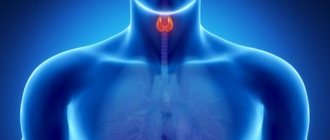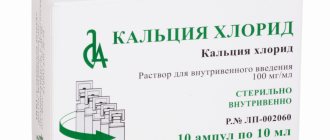Calcium is our support
The inclusion of the mineral in the bones of the child begins in utero, mainly in the last trimester of pregnancy. A newborn has a total amount of calcium in the body of approximately 25 grams. Childhood and adolescence are characterized by intensive growth and buildup of skeletal mass, and by the age of adulthood the content increases to 1000–1200 grams. Of the total amount of calcium, 99% is found in bones and teeth, and 1% is found in blood and soft tissues. Calcium, in parallel with phosphorus, accumulates in the skeleton, forming the solid basis of all bones. In this process, these elements work in pairs, and they are also helped by vitamin D, which regulates the sufficient absorption of calcium from the intestines and its deposition in the bones. The most intense processes of bone growth are observed in three age groups: from birth to one year, then at 5–7 years and, finally, in adolescence. During these critical periods, the child needs calcium in sufficient quantities and the task of the parents is to ensure the supply of this important mineral.
Types of immunity
Immunity includes humoral and cellular immunity. Let's look at each of them in more detail. Humoral is ensured by the presence of antibodies (substances that bind to antigens) in the blood. Cellular is provided by cells of the immune system. Immunity can be congenital or acquired. In turn, the acquired one can be active or passive. Active develops after illness, for example, ARVI. It also forms after vaccination. Passive is formed when ready-made antibodies are transfused into the body in the form of serum. It also develops when antibodies are passed from a mother's milk to her newborn baby. In fact, natural immunity includes congenital immunity, acquired after an illness, as well as passive immunity during the transfer of antibodies from mother to baby. Artificial immunity is called immunity after the introduction of a vaccine or serum with antibodies.
Constant update
Many people believe that the human skeleton is a “stone” skeleton that gradually increases its mass as it grows older and undergoes virtually no changes. This is not entirely true. The skeleton, like any other organ, is in constant renewal. Resorption and removal of old, damaged areas of bones and the formation of new young structures occur. In childhood, this process is very intense, and the skeletal system is completely renewed in 1–2 years. The daily amount of calcium intake directly affects the rate of linear growth and bone mineral density, determining the physical development of the child and even the long-term risks of bone fractures in old age.
The many faces of a macronutrient
Of course, the supporting and structural role of calcium is very important, but this is not the only benefit of the mineral. The processes and metabolic reactions in which it takes part are surprisingly diverse. Calcium is one of the important components of the blood coagulation system, determining the activity of at least seven parts of this multi-stage cascade. This mineral is also necessary for muscle contraction, which directly affects muscle strength, heart function, the processes of constriction and relaxation of the walls of blood vessels, and the regulation of blood pressure.
IMPORTANT! Calcium is also important for the effective functioning of the central nervous system, participating in the processes of excitation and transmission of nerve impulses. Determining the activity of a number of enzymes and hormones, it is essential for the functioning of the immune and endocrine systems. At the same time, calcium probably performs the most basic task at the level of each cell of the body: it regulates the processes of growth and differentiation, participates in the formation of intercellular bridges and connections, forming tissues and organs.
This is why the concentration of calcium in the blood, due to its importance for a large number of vital processes, is precisely regulated, and the normal range is quite narrow from 2.16 to 2.51 mmol/l. Strictly maintaining this level is of utmost importance. What fluctuations are acceptable? Very minor - a decrease in concentration by 20% already leads to major disturbances: weakening of muscle tone, increased excitability of the nervous system and even the development of seizures.
Introduction
Calcium is an important macronutrient involved in various physiological processes.
Calcium accounts for up to 9% of total body weight. The main part of calcium is deposited in bones (99%), a small amount is deposited in teeth and soft tissues (1%), in intercellular fluid and plasma (0.08%) [1–5]. In blood plasma, calcium circulates in a free form and bound to albumin and chelate compounds. The indicated fractions collectively reflect the content of total calcium in the blood. Free calcium makes up approximately 50% of the total plasma calcium concentration and is a biologically active form involved in the physiological processes of neuromuscular conduction and blood coagulation. The concentration of total and free calcium is in a narrow range - 2.2–2.6 mmol/L and 1–1.2 mmol/L, respectively [1–7].
Deficiency states
In case of insufficient intake of calcium from food or low absorption from the intestines (for example, with vitamin D deficiency), the body responds by reducing its excretion in the urine and maximizing the absorption of the mineral from the intestines. However, if these mechanisms are not enough to maintain the required level, the element is washed out from the bone structures. This leads to growth retardation and disruption of the formation of bones and teeth.
IMPORTANT! At an early age, calcium deficiency leads to the development of rickets. The child experiences curvature of the legs and gait disturbances, deformation of the bones of the chest and limbs, and changes in the bones of the skull. Characterized by late teething and frequent caries. In addition to changes in the skeletal system, clinical manifestations in the form of increased irritability, sleep disturbances, sweating, and muscle weakness reflect changes in many of the body's most important systems.
Calcium deficiency in childhood has long-term consequences, increasing the risk of osteoporosis and fractures in adults. Often, insufficient intake in childhood is reflected in problems during future pregnancy, when this mineral is necessary for the fetus to form the skeleton and is actively mobilized from the dentin of the mother’s teeth and bones.
Symptoms that may indicate calcium deficiency
For a long time, hypocalcemia can occur without any symptoms. However, sooner or later it may manifest itself in the form of the following signs:
- slowdown in mental and physical development;
- memory problems;
- bad teeth;
- fragile bones;
- peeling nails with noticeable unevenness;
- poor posture;
- flat feet;
- irritability, increased fatigue;
- trembling in the limbs, wings of the nose, eyelids;
- convulsions;
- joint hypermobility;
- curvature of limbs;
- increased sweating;
- excessive excitability;
- sleep disorders;
- desire to eat chalk;
- cracks in the corners of the mouth;
- heartbeat disorders (tachycardia and bradycardia);
- tingling in fingertips;
- diarrhea, vomiting and other disruptions in the gastrointestinal tract.
Sources of calcium
There is no doubt about the need for daily calcium intake from food, especially during periods of intensive growth, when the need for it is very high. With a balanced diet, sufficient intake of minerals and vitamin D ensures the maintenance of the required level in the blood serum, as well as proper deposition in bone tissue and teeth. In accordance with current recommendations in the Russian Federation, all children and adolescents should receive 800–1200 mg of calcium per day. The main source of the mineral in the body is food. Calcium is one of the most abundant minerals on Earth, and many foods contain it. It is present in meat, fish, vegetables, legumes, fruits and cereals. However, the listed food groups are not considered as sources of this mineral, since they do not contain very much calcium (less than 100 mg / 100 g of product), and, in addition, the percentage of absorption is also very low (no more than 10–30%).
IMPORTANT! Milk and dairy products play an exceptional role in providing this macronutrient to children and adults. Thus, a glass of milk or natural yogurt or 40 grams of cheese contain about 300 mg of calcium. It is this food group that supplies up to 80% of the required amount of calcium and phosphorus.
A special feature of dairy products is the fact that they contain essential minerals in an easily digestible form, which is rarely found in other foods. The ratio between the amount of calcium and phosphorus in foods is very important, since in the intestines the best absorption is observed at a value of 2: 1. This is the content found in breast milk. In dairy products this ratio is close to the desired one. Another benefit of this food group for calcium absorption is the presence of milk sugar. It has been proven that the presence of lactose accelerates the absorption of many minerals, including, in addition to calcium, magnesium, zinc, manganese and iron. It is impossible to consider phosphorus-calcium metabolism without taking into account the role of vitamin D, which, in fact, is a regulator of the metabolism of these minerals in the body. Therefore, calcium will be better absorbed from foods that are rich in this vitamin (fish, egg yolk, cheese, butter).
Calcium homeostasis and the role of calcium in the body
Maintaining a stable level of calcium in the blood is ensured by a number of mechanisms, the most important of which are [1–6]:
adequate absorption in the small intestine / excretion in the gastrointestinal tract as part of the secretions of the liver and pancreas;
glomerular filtration/renal tubular reabsorption;
mobilization from bone depot into the bloodstream / transport to bone tissue (mineralization);
diffusion into and release from soft tissues;
activation and functioning of the calcium-sensing receptor.
The main hormonal regulators of calcium homeostasis that control the functions of target organs include parathyroid hormone, calcitonin and calcitriol. The literature discusses the influence of parathyroid hormone-like peptide and calcium-sensitive receptor on mineral metabolism, and discusses the importance of sex and thyroid hormones, insulin, somatotropic hormone, glucocorticosteroids (GCS), cytokines, and insulin-like growth factors [1–7].
The physiological effects of calcium are generally known, these include [1–7]:
ensuring the strength of bone tissue;
implementation of neuromuscular conduction, muscle contraction;
participation in the blood clotting mechanism;
regulation of intracellular signaling systems and the function of calcium channels;
activation of calmodulin (messenger of hormonal regulation of enzymatic systems).
It should be noted that the biological significance of calcium continues to be studied. The subject of scientific research is calcium-dependent proteins that affect the function of the vascular endothelium and connective tissue, the metabolism of fats and carbohydrates. The activity of these proteins correlates with the level of calcium supply. The nootropic and neuroprotective role of calcium is discussed, as well as its participation in the processes of inflammation, apoptosis, immune and allergic reactions [1, 2].
Drink milk, children.
Dairy products are the basis of nutrition in childhood. In addition to the high content of easily digestible calcium and phosphorus, it is a valuable source of protein with a complete amino acid composition, milk fat, which contains essential fatty acids, as well as a number of vitamins. In the nutrition of young children, as well as during other periods of intensive growth, the daily amount of dairy products in the diet should be no less than 500 ml per day in the form of whole milk and fermented milk drinks, as well as 50 grams of cottage cheese or cheese. However, all these recommendations will only be relevant for children over one year old. The nutrition of babies in the first year of life has its own characteristics, which are associated with the limitation of the introduction of whole cow's milk.
Breast-feeding
Mother's milk is the main food product for children in the first year of life. Its composition ideally matches the child's needs and changes dynamically as the baby grows and develops. Breast milk is the main source of minerals in the first half of a baby’s life. The total amount of calcium in human milk is lower than in cow's milk. But thanks to the ideal ratio between phosphorus and calcium, as well as the presence of special proteins that facilitate the transport of minerals through the intestinal wall, their absorption is very high. At this age of the baby, it is very important that the mother’s diet is balanced and rational so that the child receives sufficient necessary substances and maintains the mother’s health. In addition to the daily presence of dairy products in the menu, nursing mothers are recommended to take additional calcium as part of vitamin and mineral complexes. When artificial feeding, it is necessary to give preference to adapted formulas containing lactose for better absorption of calcium and vitamin D.
Feeding time
Mother's milk can only meet the baby's needs for the first 4–5 months of life. Then, for normal growth and harmonious development, an additional supply of nutrients, as well as vitamins and minerals, is necessary. In the second half of life, complementary feeding products become a source of calcium. In accordance with modern domestic recommendations for feeding children, it is necessary to avoid the use of whole cow's milk until the age of 1 year. This is associated with a high risk of developing allergic reactions to a foreign protein; in addition, the load on the baby’s immature kidneys increases and there is a risk of damage to the cells of the intestinal mucosa. At this age, the introduction of whole milk can cause disruption of iron absorption in the gastrointestinal tract, the need for which increases significantly in the second half of life. In this regard, specially prepared and adapted dairy products are used in the nutrition of children of this age.
Modern approaches to the prevention and treatment of rickets in children
Why is infantile rickets considered a medical and social problem?
Why is prevention of rickets so important?
How to choose the correct preventive and therapeutic dose of vitamin D for a child?
Rickets is widespread in children in the first two years of life. This disease has been known for a very long time; the first mentions of rickets are found in the works of Soranus of Ephesus (98-138 AD) and Galen (131-211 AD). A complete clinical and pathological description of rickets was made by the English orthopedist F. Glisson in 1650. For some time, rickets was called the “English disease”, since its prevalence was high in England. The English name rickets comes from the Old English wrickken, which means “to bend,” and Glisson changed it to the Greek rhachitis (spine), since in rickets it is significantly deformed. At the beginning of the twentieth century, our compatriot I. Shabad discovered that cod fish oil is quite effective in the prevention and treatment of rickets, and the American researcher Mellanby in 1920 established that the active principle in fish oil is a fat-soluble vitamin. Vitamin D was discovered and obtained by McCollum in 1922, after which it became possible to study its specific effect on bones, muscles, intestines and renal tubules.
Rickets occurs in all countries, but is especially common among those northern peoples who live in conditions of lack of sunlight. Children born in autumn and winter suffer from rickets more often and more severely. At the beginning of the twentieth century, rickets occurred in approximately 50-80% of children in Austria and England. In the first half of the twentieth century in Russia, rickets was detected in 46-68% of children in the first two years of life. In Bulgaria, where there are many sunny days throughout the year, the prevalence of rickets among children under one year of age is about 20%. In Russia, the incidence of rickets in recent years among young children ranges from 54 to 66%. Currently, the incidence of rickets among infants in Moscow, according to reports from local pediatricians, does not exceed 30%. However, this figure is underestimated by at least two times, since the diagnosis of rickets is registered in the case of moderate forms, and its mild forms are not statistically taken into account.
Back in 1891, N. F. Filatov emphasized that rickets is a general disease of the body, manifested mainly by a peculiar change in the bones. In recent decades, rickets has been considered as a disease caused by a temporary discrepancy between the needs of a growing organism for calcium and phosphorus and the insufficiency of the systems that ensure their delivery to the child’s body. And although rickets can be classified as a metabolic disease with a predominant disturbance of phosphorus-calcium metabolism, it is characterized by disturbances in protein metabolism, activation of lipid peroxidation processes, metabolism of microelements (magnesium, copper, iron, etc.), and multivitamin deficiency.
Infant rickets is not only a pediatric, but also a medical and social problem, as it has serious consequences that lead to a high morbidity rate in children. Immunity dysfunctions detected during rickets in the form of decreased synthesis of interleukins I and II, phagocytosis, interferon production, as well as muscle hypotension predispose to frequent respiratory diseases. Osteoporosis, osteomalacia, osteopenia, observed with rickets, contribute to the formation of postural disorders, multiple dental caries, and anemia. Due to a decrease in the absorption of calcium, phosphorus, and magnesium, the consequences of rickets are often autonomic dysfunction, impaired motility of the gastrointestinal tract in the form of simple constipation, dyskinesia of the biliary tract and duodenum. Rickets suffered at an early age can have an adverse effect on the further growth and development of children, and its consequences can persist throughout the child’s life.
The most significant factors determining the development of rickets are:
- insufficient formation of cholecalciferol in the skin;
- disturbance of phosphorus-calcium metabolism in the liver, kidneys, and intestines;
- insufficient intake of vitamin D from food.
The main link in the pathogenesis of D-deficiency rickets should be considered endogenous or exogenous deficiency of vitamin D and its metabolites with a subsequent decrease in calcium intake from the intestine. However, vitamin D metabolites affect the functions of not only enterocytes, but also cells of other organs, which expands our understanding of the biological significance of vitamin D and the consequences of disorders of its metabolism. The amount of vitamin D produced in the skin depends on the condition of the child’s skin and the dose of ultraviolet radiation. Vitamin D deficiency due to insufficient insolation among residents of the North is apparently not fully compensated by the intake of the vitamin from traditional food, which is evolutionarily and genetically fixed in the form of structural features of the skeleton (short stature, curvature of the limbs). On the other hand, high levels of sun exposure can lead to the formation of toxic levels of vitamin D. Therefore, in order to achieve optimal effects of vitamin D on the body, there are adaptation mechanisms that broadly correspond to the cascade mechanisms of other biological systems. However, the vitamin D regulatory system is more susceptible to dysfunction as a result of exposure to environmental factors (atmospheric, nutritional, social). All these features, including genetic polymorphism of the structure and function of receptors for vitamin D metabolites, as well as different conditions of interaction with other systems regulating mineral metabolism, create the prerequisites for selecting individual doses of vitamin D preparations in the treatment of rickets.
The incidence of rickets is higher in the autumn and winter seasons. Rickets is especially common among children living in regions with insufficient insolation, cloudiness, frequent fogs and an unfavorable environmental situation (smoke in the atmospheric air). Most often, rickets develops in children born either to young mothers or to women over 35 years of age (Table 1). Of great importance for the formation of phosphorus-calcium metabolism disorders in young children is an unbalanced diet of a pregnant woman in terms of basic food nutrients (deficiency of protein, calcium, phosphorus, vitamins D, B1, B2, B6). Rickets most often affects children whose mothers did not get enough exposure to the sun during pregnancy, did not move much, or had extragenital diseases.
In recent years, the role of perinatal risk factors for the development of rickets has increased. Among the children we examined with mild and moderate forms of rickets, 27% were born from the 3rd–5th pregnancy. Rapid, induced or operative labor was observed in 73% of mothers. In 63% of women, a combination of the pathological course of pregnancy and childbirth was observed. At the time of birth, 8% of mothers were 17-18 years old. Rickets was diagnosed in 10% of children born prematurely at a gestational age of 32–34 weeks with an average weight of 2323 g (minimum 1880, maximum 3110). At the time of the study, only 7.9% of children were breastfed, and 23.8% of children who were bottle-fed and had clinical signs of rickets received diluted and undiluted cow's milk, kefir, and unadapted infant formula. Among full-term patients, 46% of children had excess weight (on average by 13.4%), and 6.9% of patients had underweight (on average by 12.6%). It should be noted that all children with rickets and malnutrition showed signs of perinatal encephalopathy. Among children with rickets, 79.3% suffered from repeated bronchopulmonary diseases, 27% from urinary tract infections, 15.9% from atopic dermatitis, 7.9% from iron deficiency anemia, and 6.3% from malnutrition. Convulsive syndrome was detected in 6.3%.
It should be noted that under equal conditions of nutrition, care and prevention, it is possible to state variants of the course of rickets of different degrees of severity - from minimal to severe. It is possible to establish the predisposition of children to disorders of phosphorus-calcium metabolism only on the basis of an analysis of numerous individual predisposing factors (Table 2).
Prevention of rickets is divided into antenatal and postnatal, nonspecific and specific.
Antenatal prevention of rickets
It is necessary to observe the daily routine of a pregnant woman, including sufficiently long sleep day and night. It is recommended to walk in the fresh air for at least 2-4 hours daily, in any weather. It is extremely important to organize a balanced diet for a pregnant woman (consume at least 180 g of meat daily, 100 g of fish - 3 times a week, 100-150 g of cottage cheese, 30-50 g of cheese, 300 g of bread, 500 g of vegetables, 0.5 l of milk or fermented milk products). Instead of milk, you can use special milk drinks intended for pregnant and lactating women (“Dumil Mama Plus”) and capable of preventing disturbances in phosphorus-calcium metabolism in the fetus and mother during pregnancy and lactation. "Dumil Mama Plus" contains high-quality whey proteins with high nutritional value, carbohydrates that stimulate the growth of normal intestinal microflora, as well as the absorption of calcium and magnesium in the intestine. In the absence of these special milk drinks, it is possible to recommend taking multivitamin preparations throughout the entire period of lactation. Regular intake of multivitamin preparations can prevent disturbances in phosphorus-calcium metabolism in the body of a pregnant woman and thereby provide the developing fetus with calcium, phosphorus, and vitamin D.
Pregnant women at risk (nephropathy, diabetes mellitus, hypertension, rheumatism, etc.) starting from the 28th–32nd week of pregnancy should be additionally prescribed vitamin D in a dose of 500–1000 IU for 8 weeks, regardless of the time of year. Instead of vitamin D preparations, in the winter and spring periods of the year, and especially in the northern regions, ultraviolet irradiation can be used, which promotes the endogenous synthesis of cholecalciferol. It is necessary to start irradiation with 1/4 biodose, gradually increasing it to 2 biodoses. The minimum distance is 1 meter. Course - 20-30 sessions daily or every other day.
Postnatal prevention of rickets
It is necessary to comply with the conditions for proper feeding of the child. Breast milk is the best for a baby in the first year of life, provided the nursing woman is properly fed. A woman’s daily diet during lactation should be varied and include the required amount of protein, including that of animal origin; fat enriched with polyunsaturated fatty acids, carbohydrates that provide the body with energy, as well as vitamins and microelements.
When artificially feeding a child, it is necessary to select a milk formula that is as close as possible to human milk, containing 100% lactose, which enhances the absorption of calcium, cholecalciferol and has a calcium-to-phosphorus ratio of 2. In milk formulas, a calcium-to-phosphorus ratio of 1 is allowed. 2-2, but in breast milk it is 2.0.
Therapeutic exercise and massage should be carried out systematically, regularly, for a long time, with a gradual and uniform increase in load.
Postnatal specific prevention of rickets is carried out with vitamin D, the minimum preventive dose of which is 400-500 IU per day for healthy full-term infants. This dose is prescribed starting from the 4th-5th week of life in the autumn-winter-spring period, taking into account the child’s living conditions and risk factors for the development of the disease. In the summer, with insufficient insolation (cloudy, rainy summer), especially in the northern regions of Russia, when feeding with unadapted milk formulas, it is advisable to prescribe a prophylactic dose of vitamin D. Specific prevention of rickets in full-term children is carried out in the autumn-winter-spring period in the first and second year life. Children at risk for rickets in the autumn-winter-spring period for the first two years of life should receive vitamin D daily in a dose of 1000 IU.
Premature babies with stage I prematurity are prescribed vitamin D from the 10th to 14th day of life, 400-1000 IU daily for 2 years, excluding summer. According to the methodological recommendations of the USSR Ministry of Health in 1990, in case of stage II prematurity, vitamin D is prescribed in a dose of 1000-2000 IU daily for a year, excluding the summer period; in the second year of life, the dose of vitamin D is reduced to 400-1000 IU. However, this dose of vitamin D may be excessive. Therefore, it is necessary to focus on the child’s health status after weight restoration.
Equivalents: 1 IU = 0.025 mcg cholecalciferol; 1 mcg cholecalciferol = 40 IU vitamin D3.
Contraindications to prescribing a prophylactic dose of vitamin D:
- idiopathic calciuria (Williams-Bourne disease);
- hypophosphatasia;
- organic damage to the central nervous system with symptoms of microcephaly and craniostenosis.
Children with small fontanel sizes have only relative contraindications to the administration of vitamin D. Specific prevention of rickets in them is carried out starting from 3-4 months under the control of the size of the large fontanel and head circumference.
Therapeutic measures for rickets include restoration of phosphorus-calcium metabolism, normalization of lipid peroxidation processes, elimination of metabolic acidosis, hypokalemia, and elimination of vitamin D deficiency.
Treatment for rickets usually includes:
- organizing the correct daily routine for the child. Children should be in the fresh air for at least 2-3 hours every day, and the room where the child is located should be regularly ventilated;
- proper nutrition of the child, adapted according to his age;
- hygienic baths and rubdowns, douches, massage, physical therapy (after the activity of rickets subsides);
- drug therapy.
Treatment of rickets involves the administration of vitamin D preparations. Depending on the severity of rickets, it is recommended to use from 2000 to 5000 IU of vitamin D per day for 30-45 days. Next, the dose of vitamin D is reduced to a preventive dose (500 IU) daily for 2 years (except for the summer months) and in the third year of life in winter. Most often, we recommend starting treatment with a dose of 2000 IU for 3-5 days, with a gradual increase if the drug is well tolerated to an individual therapeutic dose (from 3 to 5 thousand IU). A dose of 5000 IU is prescribed for severe bone changes. Children at risk 3 months after the end of the first course can be given anti-relapse treatment with vitamin D3 at a dose of 2000-5000 IU for 3-4 weeks.
The daily requirement for vitamin D depends on:
- child's age;
- genetic characteristics;
- the nature of the child's feeding;
- features of child care;
- season;
- severity of phosphorus-calcium metabolism disorder;
- children's health status;
- the nature of the concomitant pathology;
- climatic conditions of the area where the child lives.
The oil forms of vitamin D that exist so far are not always well absorbed.
The causes of impaired absorption of vitamin D oil solution are:
- syndrome of impaired absorption in the small intestine (celiac disease, food allergy, exudative enteropathy, etc.);
- chronic pancreatitis;
- cystic fibrosis;
- dysembryogenesis of enterocytes;
- chronic enterocolitis;
- nonspecific ulcerative colitis, Crohn's disease.
In recent years, an aqueous form of vitamin D3, Aquadetrim (Terpol, Poland), has been widely used for the prevention and treatment of rickets.
The benefits of vitamin D3 aqueous solution are:
- rapid absorption from the gastrointestinal tract;
- optimal dose selection - one drop contains 500 IU;
- rapid onset of clinical effect;
- high effectiveness for rickets and rickets-like diseases, as well as for pathologies of the gastrointestinal tract.
Employees of the Research Institute of Pediatrics and Pediatric Surgery of the Ministry of Health of the Russian Federation have shown the high therapeutic effectiveness of the water-soluble form of vitamin D3 in all patients with acute and subacute rickets in a daily dose of about 5000 IU. The drug also proved effective in treating children with vitamin D-resistant rickets at a daily dose of 30,000 IU. Aquadetrim is well tolerated; no side effects or adverse events have been identified during its use.
Currently, an alcohol solution of vitamin D2 should not be used due to the high dose (about 4000 IU in 1 drop) and the possibility of overdose due to the evaporation of alcohol and an increase in the concentration of the solution.
Thus, the selection of doses of vitamin D is carried out in accordance with the characteristics of the clinical picture of rickets and the dynamics of the disease. The doses and duration of therapy for rickets vary greatly; their selection depends on many factors, including the individual characteristics of the body.
The detection in a child, especially with a family history of urolithiasis, tubulointerstitial nephritis against the background of metabolic disorders, during treatment with vitamin D, of a decrease in the anti-crystal-forming ability of urine, a positive Sulkovich test, oxalate and (or) phosphate, calcium crystalluria serves as the basis for adjusting the dose of vitamin D.
Along with vitamin D, calcium supplements are prescribed for rickets, especially for children who are bottle-fed, born premature, low birth weight, with signs of morphofunctional immaturity.
As can be seen from table. 6, The least amount of calcium is found in calcium gluconate. It remains traditional to use eggshell powder (calcide) together with lemon juice or a citrate mixture solution, which improves the absorption of calcium salts in the intestines.
The calcium requirement for a healthy child during the first 6–12 months is 500–600 mg.
Our experience shows that in children with severe rickets and hypocalcemia, it is advisable to perform calcium electrophoresis on the chest and legs.
Calcium preparations are prescribed orally in the first and second half of life for 3 weeks in age-appropriate doses.
For children of the second year of life, a diet enriched with calcium is recommended (Table 8).
Of particular importance is the use of antioxidants in the acute period of rickets and during intercurrent diseases. The most justified is the use of tocopherol or its combination with vitamin C, beta-carotene and (or) glutamic acid. To reduce autonomic disorders and muscle hypotension, carnitine, panangin, asparkam, and glycine are prescribed for 3-4 weeks.
In order to correct disorders of physical development in the second year of life, children with rickets can be prescribed the drug acti-5, which is a syrup containing lysine, a complex of phosphoric acid and organic calcium salts necessary for the formation of the bone skeleton and muscle development. In children from 2.5 to 6 years old, acti-5 is prescribed 1 teaspoon 2-3 times a day, over 6 years old - 2 teaspoons 2-3 times a day. When taking the drug, children with functional disorders of the gastrointestinal tract may rarely experience abdominal pain and loose stools.
In severe cases of rickets, potassium orotate, carnitine hydrochloride (el-car, carnitene), and ATP are used to restore metabolic processes.
Restorative therapy includes massage and exercise therapy, which are prescribed 2 weeks after the start of drug therapy, balneotherapy (pine, salt baths for a course of treatment of 10-15 baths). Balneotherapy is carried out 2-3 times a year. The volume of drug therapy should be determined not only by the severity of rickets, but also by the age of the patients. To exclude polypharmacy, medications prescribed in a certain sequence may be recommended (Table 9).
Clinical laboratory, ultrasound and densitometric studies indicate the need for long-term observation (at least 3 years) of children who have suffered rickets. They are subject to quarterly inspection. X-rays of bones are performed only when indicated.
Rickets is not a contraindication for preventive vaccinations. After 3-4 weeks from the start of therapy, vaccination is possible.
N. A. Korovina, Doctor of Medical Sciences, Professor I. N. Zakharova, Doctor of Medical Sciences, Professor of RMAPO, Moscow
Cereal complementary foods
For babies older than 4-5 months, the source of calcium and phosphorus is specialized industrial products - baby milk porridges. For example, to produce the Bebi Premium line of porridges, milk is used, which is specially adapted for better absorption by the child’s body. The milk for this manufacturer's products is delivered from Danish dairy farms, recognized as the best in the world. The milk component is the highest compared to baby cereals of other brands and does not contain vegetable oils. The last aspect is also very important in the issue of calcium absorption. Palmitic and stearic fatty acids, which are part of a number of vegetable oils, bind to calcium to form insoluble compounds, thereby preventing its absorption.
IMPORTANT! All products of the Bebi Premium line are enriched with a vitamin and mineral premix, which is qualitatively and quantitatively specially selected for better absorption of calcium. Thus, the necessary supply of the mineral consists of the natural content in cereals and the dairy component, as well as due to the additional enrichment of porridge with calcium and vitamin D.
This allows you to make a significant contribution to the child’s daily need for these essential substances.
Dairy products
At the age of over 6 months, the baby’s diet can be expanded with cottage cheese, and after 8 months - with fermented milk drinks. These foods are also a source of easily digestible calcium. In the nutrition of children in the first year of life, specialized products based on cow's and goat's milk - liquid (biolact, yogurt, kefir) and paste (baby cottage cheese) - should be used first.
IMPORTANT! In these complementary feeding dishes, protein and milk sugar are partially broken down, which improves their digestibility and reduces the risk of allergies, kidney damage and iron loss compared to whole cow's milk.
However, it must be remembered that the daily intake of these products should be limited in volume and not exceed 200 ml for drinks and 50 grams for children's cottage cheese. Use in large quantities can have an irritating effect on the mucous membrane of the gastrointestinal tract, increase the load on the kidneys, cause colic, frequent and loose stools, and interfere with the absorption of iron. Among the large selection of fermented milk drinks, it is recommended to give preference to products that use probiotic cultures approved for use in children.
Menu for strong bones
Let's summarize: what food products on our table contain the beneficial substances that we talked about here - calcium, phosphorus, magnesium, vitamins D and K?
Where can I get all the necessary vitamins and minerals?
Calcium
- Dairy products,
- Eggs,
- Spinach,
- Hard cheese,
- Sesame,
- Fresh greens,
- Nuts and seeds,
- Dried fruits.
Vitamin D
- Fish fat,
- Cod liver.
Magnesium
- Bran, oat flakes,
- Bananas,
- Legumes,
- Dried fruits,
- Cereals.
Phosphorus
- Milk,
- Eggs,
- Cheese,
- Nuts,
- Seafood,
- Legumes,
- Buckwheat,
- Yeast,
- Potato,
- Dried fruits,
- Seeds.
What food groups need to be consumed regularly so that the baby receives all the elements he needs in the right quantities, and are there additional factors, besides food, that affect his health?
Milk and dairy products
Milk contains large amounts of calcium. To satisfy the daily requirement for this element, it is recommended for an adult to consume 3 servings of dairy products. During pregnancy, this need increases by almost a third, so you can add one or two additional servings to the three main ones. Dairy products (kefir, sour cream, cheese, yogurt) also contain calcium. So we recommend introducing a variety of milk products into your diet.
You can give milk as a drink or prepare other dishes based on it (porridge, puddings, jelly, cocktails). If your baby has an allergic reaction to milk, seek advice from your pediatrician or allergist. They will tell you what you can replace this product with.
Fish
If your baby is not allergic, be sure to include fish puree in his diet (not earlier than 8 months). Fish is a complete source of protein and fat, containing a large amount of polyunsaturated fatty acids, including class 3, as well as vitamins B2, B12, and minerals. Fish is introduced into the diet of children from 8 to 9 months with caution, taking into account individual tolerance. It is given to the child 1 – 2 times a week instead of a meat dish.
Meat products
Meat contains complete animal protein, the amount of which in beef, lean pork, rabbit, chicken, chicken, turkey, and horse meat reaches 20–21%, as well as well-absorbed heme iron, magnesium, zinc, vitamins B1, B2, B6, B12. It is recommended to introduce meat puree into the diet of children older than 6 months.
Eggs
Egg yolk is an excellent source of vitamin D, and eggshells are rich in calcium. Proteins and vitamins are what makes this product valuable from the peel to the very core. The old advice from nutritionists was that you should eat eggs 2-3 times a week. Modern experts say that it is optimal for health to eat 6–7 eggs during the same time. If you are allergic to chicken egg whites, quail eggs are recommended; they contain a higher concentration of vitamins.
Vegetables and fruits
Vegetable puree contains organic acids, potassium, iron and dietary fiber, including pectins. Certain types of vegetables (carrots, pumpkin, spinach, etc.) are rich in carotene, a precursor of vitamin A. At the beginning of complementary feeding, puree should consist of vegetables of the same type with delicate fiber, such as zucchini or cauliflower. Next, it is advisable to use a combination of 3 - 4 vegetables. Juices contain natural sugars (glucose, fructose, sucrose), organic acids (malic, citric, etc.), which have a positive effect on digestive processes. Fruit purees are similar in composition and nutritional value to fruit juices , especially with pulp. At the same time, the percentage of sugars, organic acids and dietary fiber in them is higher than in juices.










